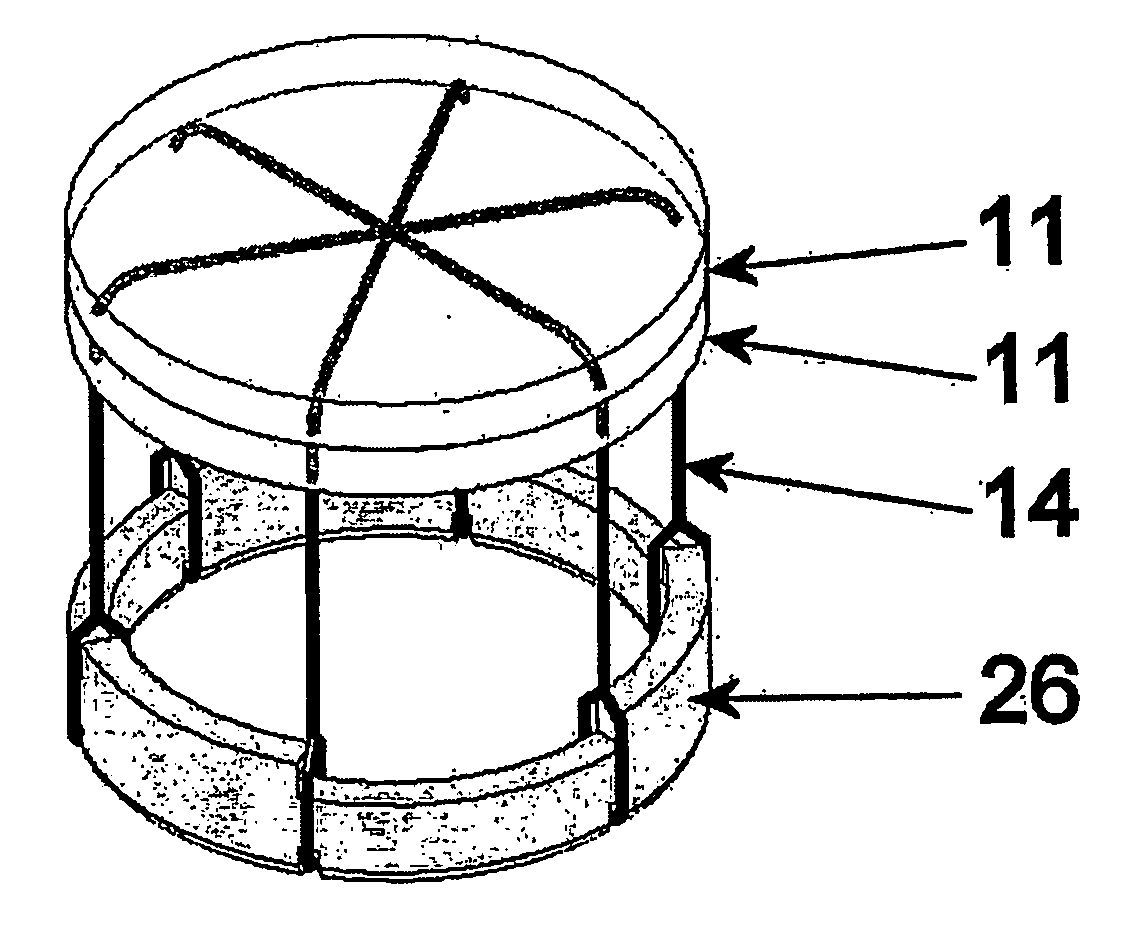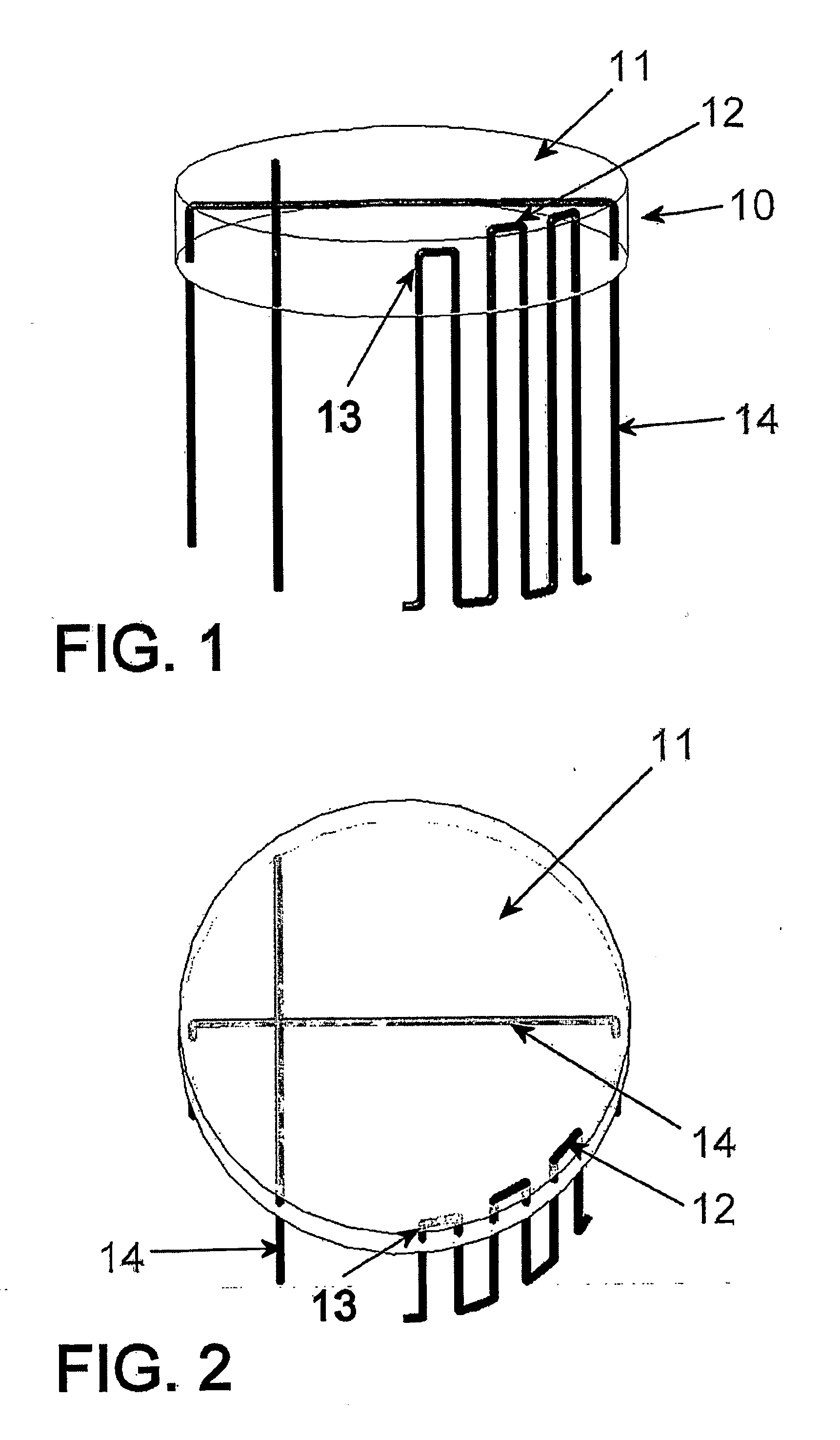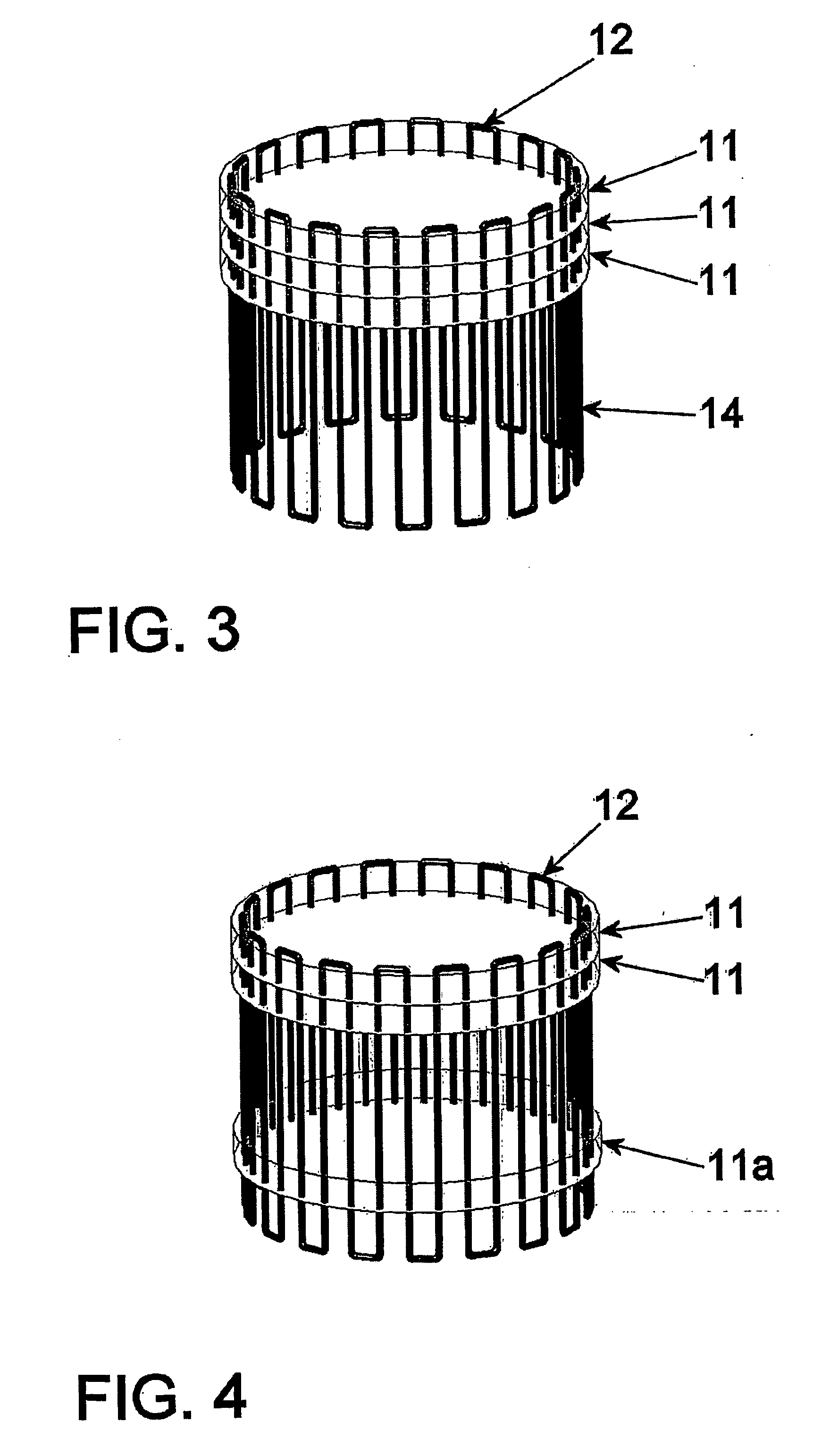Repair of damaged tissue on a bone site
- Summary
- Abstract
- Description
- Claims
- Application Information
AI Technical Summary
Benefits of technology
Problems solved by technology
Method used
Image
Examples
Embodiment Construction
[0042] The improved device may comprise a pad made of woven or non-woven material, permanent or bioabsorbable when implanted in the body, which is connected to threads made of mono-filamentous- or multi-filamentous yarns, or sutures that are of permanent or bioabsorbable materials when implanted in the body. The threads can be connected to the pad through its substance either parallel to the surfaces of the pad or through the substance of the pad in a substantially perpendicular or inclined direction to the surfaces of the pad (as illustrated in FIG. 1 and FIG. 2), the thread ends (which can be in the form of loops or single ends or both) emerging near the periphery of the pad and projecting from the site where they emerge by a distance of say 30 millimetres (but can be longer or shorter), thus forming means of securing the pad in a narrow groove prepared to surround a repair site prepared as described above. A ring (matching in shape to that of the groove) is fitted into the groove...
PUM
 Login to View More
Login to View More Abstract
Description
Claims
Application Information
 Login to View More
Login to View More - R&D
- Intellectual Property
- Life Sciences
- Materials
- Tech Scout
- Unparalleled Data Quality
- Higher Quality Content
- 60% Fewer Hallucinations
Browse by: Latest US Patents, China's latest patents, Technical Efficacy Thesaurus, Application Domain, Technology Topic, Popular Technical Reports.
© 2025 PatSnap. All rights reserved.Legal|Privacy policy|Modern Slavery Act Transparency Statement|Sitemap|About US| Contact US: help@patsnap.com



